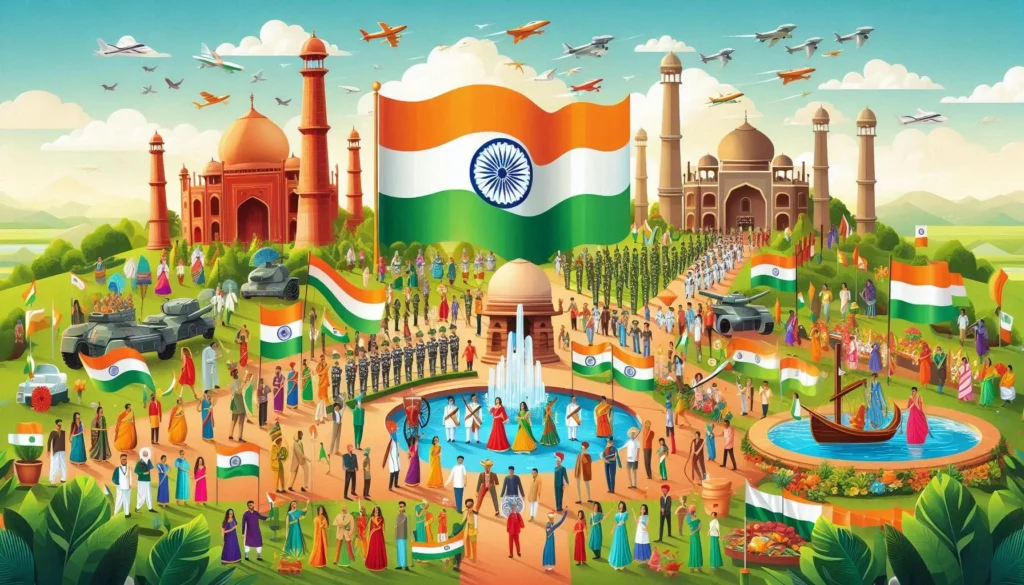It’s the very heart of human global art and culture. These things have defined societies, told stories, and given people a lens through which to understand the world. It’s that richness in arts and cultures connecting us across time and space-from cave paintings of old to today’s movements in digital art-that makes this journey so spectacular. As the calendar pages turn to usher in the dawn of 2024, that landscape continues to evolve with technological advances, social movements, and a growing resonance for diverse voices.
The Ever-Evolving World of Global Arts and Culture
Global arts and culture, in 2024 are now more interconnected than they ever have been. With this third internet and social media wave, the world has transformed itself into this massive idea market of creativity. This key transformation can mean that different global artists and cultural practitioners can work and share stuff across borders without leaving their home countries.
The Role of Technology in Shaping Global Arts and Culture
Technology has really changed the way we know to date with experiencing and participating with the arts. Virtual reality (VR) exhibitions, augmented reality (AR) installations, and digital galleries are fast becoming the new common ways that audience interacts with art. With these tools, access to art has become democratized to more people through affordability to those who might not have otherwise gained access to the space.
In fact, 2024 marked mass adoption by many institutions of culture using NFTs for authentication and online sales of digital art. This acted to broaden the very definition of art in itself. On one hand, critics of the NFT movement argue that it commodifies creativity, on the other hand, its supporters point to the ability of such art to bring attention and financial support to its creators. Digital art is one of the significant aspects of the continually transformed global arts and culture.
Renaissance of Global Arts and Culture
There is happening around the world a kind of cultural renaissance. From renewed interest in traditional crafts to an explosion of contemporary art movements, global arts and culture are in a dynamic state of flux. Artists, more and more, are looking back at their cultural roots and restating them in new ways for modern audiences. This trend boasts indigenous artists who get larger platforms in the international art scene as well as use their work for expressing social and environmental concerns.
For instance, some of the artists in the region, all the way from Oceania, North America, and Latin America, used their artwork in 2024 to give attention to climate change as well as the betterment of environmental sustainability. In fact, these arts are often rooted deep within the spiritual elements that connect them to the land, which then holds it true that there is mainly ecological preservation through artistic means.
Cultural Festivals in 2024: Celebrating Diversity
Cultural festivals serve a significant role in shaping and maintaining global arts and culture. In the year 2024, these festivals become an umbrella that celebrates the diversity of all dimensions—race, gender, and social identity.
Perhaps the most important event in the calendar is the Venice Biennale, still one of the largest, must-visit arenas for contemporary artists around the world. The 2024 edition was notable for having massive underrepresented regions, including Africa and Southeast Asia, with which to represent the shift toward an all-inclusive understanding of the global perspective on art and culture.
In the same line, festivals like Glastonbury and Coachella have also evolved. From being exclusively being out there for Western artists, these festivals now comprise artists from nearly every part of the world. They put forth genres like Afrobeat to K-pop, which are truly international and representative of the global context of arts and culture in 2024.
Global Arts and Culture and Social Movements
Art has always been a medium of social change, and in 2024, it is more prominent than ever. Social movements have global arts and culture intertwined into them; from climate change to racial inequality, the artists speak out on their respective platforms.
Of special note in this context is street art, which has emerged as an influential voice in the world debate on social justice. Murals and graffiti dot the cities of Bogotá to Berlin as a constant reminder of the struggles and aspirations for greater inclusivity in the community. As a reflection of global arts and culture in speaking out against oppressive systems and advocating for a more just world, such public display of art speaks for itself.
The Influence of Globalization on Arts and Culture
Globalization has its deep effects on arts and culture. An interconnected world connects people faster in issues to do with cultural exchange. Global arts and culture can no longer be defined by geography. Music, art, and fashion trends go around the world in days if not hours.
However, this process also brings along problems. Some of these have criticized globalization in that it results in cultural homogenization through the rapid exchange of cultural products, where dominant cultures overshadow local traditions. Many are, however, trying to preserve their rich cultural heritage by incorporating traditional elements into their modern work. There is a blend of old and new in global arts and culture in the years 2024.
Cultural Preservation in 2024
Indeed, cultural preservation has been on top of the major issues for most communities with the quickness of globalization. Preserving endangered languages, traditions, and art forms have seen increasing efforts, especially in 2024. UNESCO and other agencies that promote the observance of human rights are its leaders in this movement. They do this through cultural programs that support indigenous communities, document oral histories, and conduct restoration funds for historical sites.
Artists are also using these media for cultural heritage advocacy. Most of the modern works in current global arts and culture have represented innovative approaches and materials aimed at incorporating as much culture as possible into the future societies.
Rise of Contemporary African Art in Global Arts and Culture
It is true that in the contemporary African art scenario there has been a significant rise to stardom globally. Across all the continents, international recognition of the artists and features at international museums and galleries would never go missing. The change from viewing African art as “tribal” or “ethnic” has now delineated it into an adaptable and creative dimension of global arts and culture.
In 2024, we are only seeing artists such as Zanele Muholi from South Africa and Ibrahim Mahama from Ghana, who shall forever disturb the Western perceptions of African identity. It is work that has revolved around topics of post-colonialism, migration, and gender to give the global arts and culture world a different look.
Global Arts and Culture in Education
Education is one of the factors that encourage and sustain arts and culture worldwide. Schools and universities across the globe are now adopting arts and culture in their curricula for a 2024 education period. Students learn cultures, their history, and current contemporary concerns through artistic expressions.
Moreover, the way arts and culture are taught is changing with technology. Virtual classrooms, workshops online, digital art courses are making art education more accessible to people across the world. This democratizing art education will help nurture the next generation of artists to ensure global arts and cultures continue to flourish.
The Future of Global Arts and Culture
The future of the world’s arts and culture will be exciting yet uncertain. It is becoming increasingly interlinked, which means greater potential for greater cultural interchange and collaboration. However, those handicapping arts worldwide are climate change, political instability, and inequality.
Global arts and culture will therefore have little to nothing to fear regarding how resilient they are. Artistic people have, over the years, adapted and responded to the great challenges of their time. For example, a lot of artists are using technology in 2024 to try to expand limits to what art can possibly be while there are others who are going back into the old practices so that their cultural heritage is well maintained.
In the same manner as their counterparts, global arts and culture will continue playing a significant role in shaping our comprehension of the world. We can make sense of our collective history, create an avenue to question what was once thought incorrect, and inspire people to think of a better future.
Conclusion
Global arts and culture, as of 2024, claim to be the central nexus of human experience. They connect us with our past, reflect our present, and inspire our future. The world of art and culture, across the globe, is more vibrant and diverse than ever before, thanks to the revival of traditional practices and the surge in digital art. The boundaries that artists defeat and societal norms that they challenge will not affect the global change, creativity, and expression with it.
This contribution, that of engaging with and supporting the arts, takes place within a richer and more inclusive world. It signifies resilience, diversity, and creativity in the human spirit in the global landscape of arts and culture by 2024.



